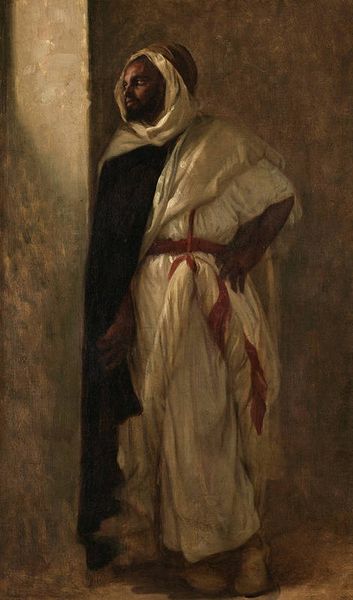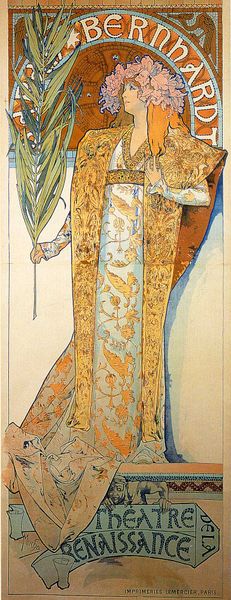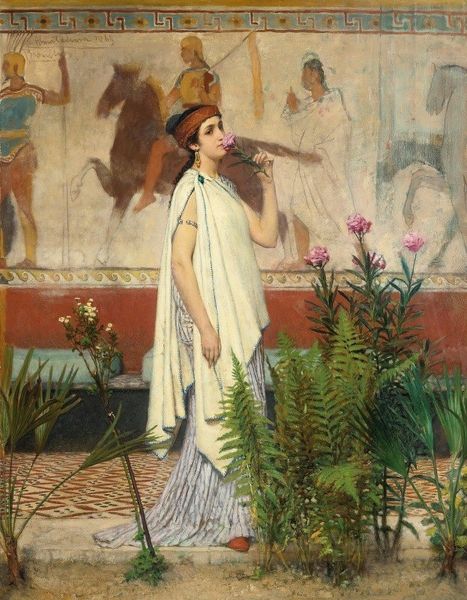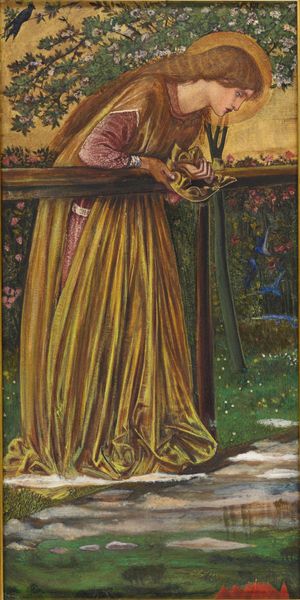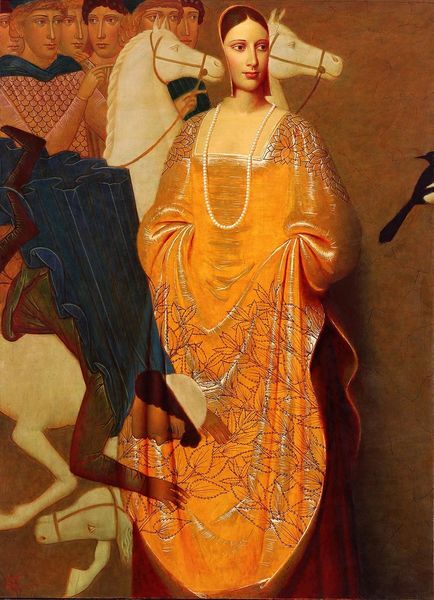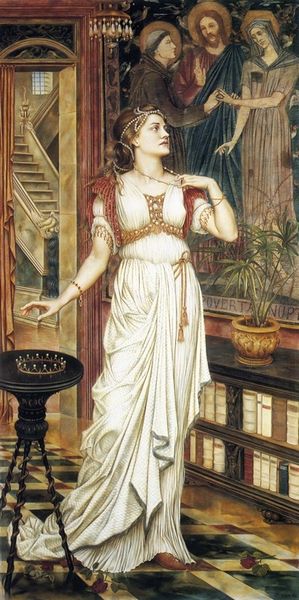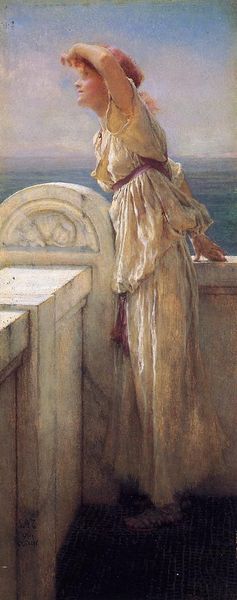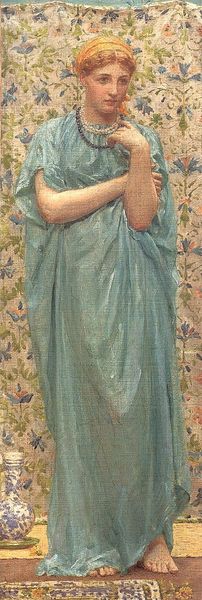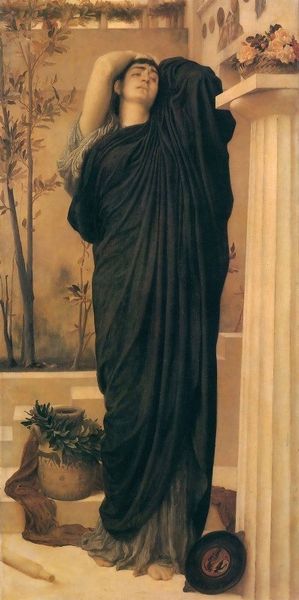
painting, gouache, watercolor
#
portrait
#
gouache
#
painting
#
gouache
#
arts-&-crafts-movement
#
figuration
#
oil painting
#
watercolor
#
watercolour illustration
#
pre-raphaelites
Copyright: Public domain
Curator: Walter Crane's "Laura Reading," created around 1885, presents a woman engrossed in a book. The Pre-Raphaelite influence is unmistakable. Editor: The immediate sense is one of serene domesticity, wouldn't you agree? It's quite an intimate, almost hushed portrayal of female intellect within a decorative space. There is also an interesting intersection between ornamentation and subject, don't you think? Curator: Precisely. And, considering the broader cultural climate of the time, where women's education and intellectual pursuits were frequently debated, this image gains layers of significance. This is about more than domestic tranquility. It subtly pushes for the intellectual freedom of women by imbuing reading with beauty and grace. Editor: The artist does appear invested in idealizing female representation. This links to the artistic movements’ focus on aesthetics and creating visually appealing work that conveys societal values. However, her whiteness and class privilege within such visual work require critical thought. What do you make of her garments, which include subtle, almost hidden decorative embroidery? Curator: The garments signify class, certainly, and access. But within the context of Arts and Crafts, the care taken with fabric and ornamentation speaks to values like the importance of artisanal work. This is also an attempt at reclaiming craft for women. Crane would have perceived the space of craft as inherently liberatory and creative. It suggests her own creative life, as well. The book itself then also functions as a material possession, something precious to be displayed, that speaks about one’s own social positioning. Editor: It’s almost as though her clothing, combined with the decorative setting, aims to signal an environment where intellectual life is cherished and considered invaluable. The ornamentation and the natural details function as further enhancement of the woman herself. In my view, she is as a flower in a terrarium; Walter Crane has trapped her between aesthetic values and ideological ones, for viewers such as ourselves to observe. Curator: I agree; a rather melancholic entrapment is suggested. Walter Crane uses painting to elevate craft and to represent women with dignity and intellectual intent, even while such images are steeped in power dynamics. I will hold onto Crane's desire for women's intellectual emancipation, embedded in his composition. Editor: It is an interesting and complex portrayal indeed; one that demands historical, theoretical, and visual appreciation. Let us appreciate this gouache!
Comments
No comments
Be the first to comment and join the conversation on the ultimate creative platform.
